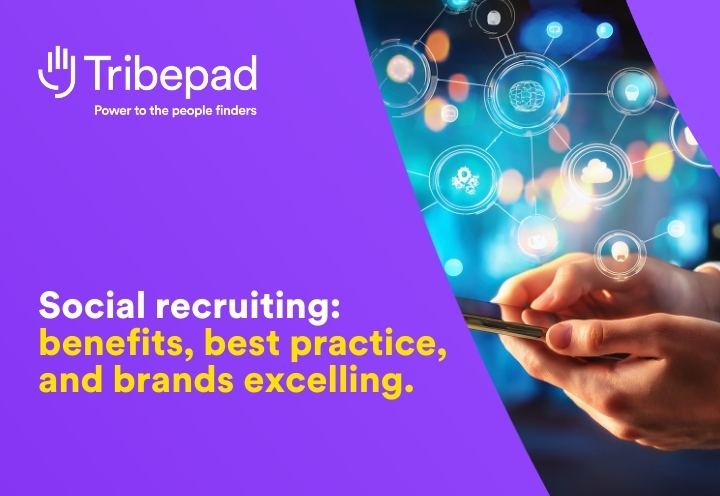Councils across the UK are adopting the latest recruitment software to attract quality candidates, improve processes and increase efficiency. With local government organisations under pressure to be more commercial, respond to demand and still balance the books, getting recruitment right is a pretty tough challenge. But the technology is there for those organisations to make changes that have a lasting impact.
For this post, we spoke to Chris Bussell, Head of Service Delivery at Tribepad, and Jason Wisniewski, Strategic Resourcing and Talent Acquisition Manager at Richmond and Wandsworth Councils. They share the expertise and experience they’ve gained from implementing our own Applicant Tracking System in local government.
If you’re looking to transform the way your council does recruitment, this step-by-step guide is a great place to start. If you’re ready for more detailed information, you can download and read our white paper, Transforming recruitment through technology: A short guide for local government.
Change at scale
It’s worth remembering that councils and other public bodies are some of the largest employers in the UK. According to the Office for National Statistics, for September 2018, of all people in paid work, 16.5% were employed in the public sector. That means change of any kind can feel daunting when it needs to be done at serious scale.
The good news is that modern recruitment software is designed specifically for working with large teams in multiple locations. Through automation, lightning-fast reporting and by providing plenty of flexibility, your hiring process will be quicker, more effective and reduce costs for your organisation. So how do you get started?
Get buy in from all of your stakeholders
The best place to start when looking to implement new recruitment software is with the people it will most affect. Before you make any decisions, it’s important to get all of the key stakeholders into the room and be open and honest with your questions and answers.
As Chris, Head of Service Delivery at Tribepad, states: “You can run workshops or interview anyone who you can’t see in person – just make sure that every conversation has detailed minutes. The most important thing is to make sure that everyone feels involved in the process and able to contribute.”
Understand your objectives
Every organisation is different and there is no one way to implement new recruitment software. That’s why it’s so important to really think about, discuss and understand why you’re making such a significant change.
Jason puts it like this: “The most fundamental advice I can give to anyone adopting new technology is to ensure it will meet its objectives and purpose. For example, is this to improve automation in the process? Is it about giving an amazing candidate experience? Or do you most want to allow hiring managers to self-serve?”
Those conversations with stakeholders should help you develop clear objectives around what you want to achieve. Write those objectives up and make sure that you refer back to them throughout the process.
Know your budget
It may sound obvious, but it’s vital that you know how much budget you have to invest in new software. From there, you should focus on value rather than cost and really think about the sort of return on investment you are likely to see as a result of a new system.
There are a number of suppliers out there and each will have its own pricing structure. Once you’re clear about what you need and know the budget you have available, it’s time to get in touch with a select few suppliers and ask them to send you some cost estimates.
Do your research
Are there other councils in your region that have already been through the software implementation process? Contact colleagues in the sector and start researching how other public bodies have tackled their own recruitment issues. Ask them what worked and things they would do differently.
You can also go online and use sites like Capterra to learn about different software packages and the companies that make them. What are their primary features? How do they compare? Most providers will have a customer service team, so don’t be shy about picking up the phone and being direct.
Here’s Jason’s advice: “If you have implemented HR technology before, don’t believe it will be the same process or adoption – each provider will have different terminology and language. The biggest part is to engage with the technology provider early on to understand if you talk the same language.”
Learn your own business processes
Before you choose a new recruitment system, you need to know your own businesses processes inside out. That’s an impossible task for one person – you need to speak to your recruitment team and department managers to get a first-hand account of how things currently work at your council.
For Jason, these conversations also help your wider team feel involved: “Hiring managers will spot issues that HR and IT don’t. You can then work with whichever technology provider you choose to address those specific business pain points early on. It means you can provide feedback to hiring managers that shows their views were listened to and acted on.”
Wondering how to start those business process conversations? Ask your team about the things that they currently find challenging. What are the day-to-day pain points that they encounter? You can then work with them to create a list of recruitment software features that would benefit your council.
Demo the software you want to use
Implementing a whole new recruitment system is a big step. You’re asking your entire organisation to change how they work. That’s why you should always ask technology suppliers for a demo of any software that you might be considering.
For Jason, this was the single most important factor in making the process successful at his council. And again, he recommends getting the right people from your team to use and test out the software, especially hiring managers.
“It surprised me how willing hiring managers are to challenge and get involved in raising critical questions during the demonstration stage. They will ask questions that will help you assess the system’s ability to solve your aims and objectives. You will also find how willing the technology provider is to work with the business in resolving your resourcing issues.”
Have a clear process and plan
Chosen your software provider and ready to get going? Don’t get too carried away at this point – you need to work with all your stakeholders and the provider to make sure that you have clear processes and a thought-out plan in place. Does the IT team and the people who will use the new software know what will happen?
Jason says consult them early in the project: “Get them involved in the decision-making process. You will increase enthusiasm for the new technology and ensure high adoption rates after it is live.”
In practice, it’s all about setting expectations. Everyone needs to understand their role, how it will be affected and what it will mean for them to measure up. Make sure any plan is clear on objectives and timelines, including clear sign-off points in the project.
The image below shows the plan for another client who had an exceptionally complex project involving multiple stakeholders and councils. As you will see, the extensive time put into detailed project planning made for a shorter implementation for a project of this nature. Most projects will take nowhere as long as this, however, it gives a good insight into how detailed planning can assist a smooth implementation.
Run a soft live period
Before you introduce the new recruitment system wholesale across your council, work with your software provider to run a soft live period. This means you’ll be able to get your team using the new system while it’s still being implemented. It’s an opportunity for them to get fully up to speed and engaged in the process.
This is something Chris has worked on with a number of organisations: “The time spent running soft live is always extremely valuable. For councils, where there are large teams and multiple people involved, that ability to get stuck in early provides a big head start.”
Use your support team
Quality software providers will have a support team on hand to help you with any issues that you might have. Those early days may well throw up a few questions, so feel free to pick up the phone or send an email to get the help you need. That’s what they’re there for.
Again, Chris believes support is an area that can really help software providers stand out from the crowd: “I’m an account manager, which means that the councils I work with know that I am always there for them when they need me. It doesn’t matter what the problem is – I’m the first port of call and just a phone call away.”
Of course, the more you use your new recruitment system, the less you’re likely to call on that support. But having it there is reassuring as you begin to settle in and make the software your own.
Give Tribepad a try
Tribepad ATS is trusted by some of the biggest organisations in the world, including a number of public bodies in the UK. Call our friendly team on 0114 3122 110 to find out more or arrange a demo.




